Golang Convert String To Int
## Introduction to Golang’s string-to-int conversion
String-to-int conversion is a fundamental operation in any programming language. It involves parsing a string representation of a number and converting it into its corresponding integer value. Golang provides efficient and reliable methods to perform this task, making it easy for developers to convert strings to integers.
## Understanding the strconv package in Go
The strconv package in Golang provides functions for converting strings to various data types, including integers. It offers a range of conversion options, error handling mechanisms, and support for different number systems. It is essential to understand the strconv package and its functions to effectively convert strings to integers.
## Using the strconv.Atoi() function for converting string to int
The strconv.Atoi() function in Golang is a commonly used method for converting a string to an integer. It takes a string as input and attempts to parse it as an integer. If successful, it returns the corresponding integer value. However, it also provides error handling by returning an error value if the conversion fails.
## Handling conversion errors and checking for valid integers
When converting a string to an integer, it is crucial to handle errors and verify the validity of the input. The strconv.Atoi() function returns an error value if the string cannot be converted to an integer. Developers can utilize error handling techniques to gracefully handle such scenarios and provide appropriate feedback to the user.
## Converting strings in different number systems
In addition to decimal numbers, Golang allows developers to convert strings in various number systems such as binary, octal, and hexadecimal. The strconv.Atoi() function can parse strings based on these number systems, providing flexibility in handling different representations of integer values.
## Exploring the strconv.ParseInt() function for advanced conversion options
While strconv.Atoi() is suitable for converting strings to integers in most cases, Golang’s strconv package offers a more advanced function called strconv.ParseInt(). This function allows developers to specify the base of the input string, enabling conversions from non-decimal number systems and providing fine-grained control over the conversion process.
## Converting strings with specified bit sizes
Golang supports integers of different sizes, such as int8, int16, int32, and int64. The strconv.ParseInt() function can be utilized to convert strings into integers with these specified bit sizes. This provides flexibility in handling different integer representations and optimizing memory usage.
## Handling large integer values during string-to-int conversion
When converting strings to integers, it is important to consider the range of values that can be represented by the target integer type. Golang provides the constants math.MaxInt64 and math.MinInt64 to represent the maximum and minimum values that can be stored in an int64. Developers can compare the parsed integer value against these constants to handle scenarios where the input string represents a value outside the supported range.
## Addressing edge cases and potential pitfalls
While Golang provides reliable methods for string-to-int conversion, there are a few edge cases and potential pitfalls that developers should be aware of. For example, leading and trailing whitespaces in the input string can cause the conversion to fail. Additionally, strings containing non-numeric characters may result in unexpected behavior. Understanding these edge cases and implementing appropriate error handling can prevent bugs and ensure the reliability of the conversion process.
## Optimizing performance of string-to-int conversion in Go
String-to-int conversion can be a performance-critical operation, especially when dealing with large volumes of data. Golang offers several techniques to optimize the performance of string-to-int conversion, such as using byte slices instead of strings and utilizing the strconv.ParseInt() function with a preallocated byte slice. By applying these optimization techniques, developers can significantly improve the efficiency of their string-to-int conversion code.
## FAQs
**Q: How to convert a string to an int64 in Golang?**
To convert a string to an int64 in Golang, you can use the strconv.ParseInt() function with the base argument set to 10. This function returns an int64 value and an error value. Make sure to handle the error returned by the function to handle cases where the string cannot be converted to an int64.
**Q: How to convert a string to an int32 in Golang?**
Similar to converting a string to an int64, you can use the strconv.ParseInt() function to convert a string to an int32. Set the base argument to 10 and handle the error value returned by the function.
**Q: How to change a string to an int in Golang?**
To convert a string to a regular int (int64 or int32 depending on the architecture), you can use the strconv.Atoi() function. This function automatically infers the appropriate integer type based on the target platform.
**Q: How to convert an interface to an int in Golang?**
To convert an interface value to an int, you can use a type assertion to assert the interface value to a string and then use the strconv.Atoi() function to convert the resultant string to an int.
**Q: How to convert an int to an int32 in Golang?**
To convert an int value to an int32 in Golang, you can use a type conversion. For example, if you have a variable “x” of type int, you can convert it to int32 by assigning it to a variable of type int32, like this: “var y int32 = int32(x)”.
**Q: How to convert a rune to an int in Golang?**
A rune is an alias for int32 in Golang. Therefore, you can convert a rune to an int by using a type conversion. For example, if you have a variable “r” of type rune, you can convert it to int by assigning it to a variable of type int, like this: “var x int = int(r)”.
**Q: How to convert a string to a uint in Golang?**
To convert a string to a uint (unsigned integer) in Golang, you can use the strconv.ParseUint() function. Set the base argument to 10 and handle the error value returned by the function.
**Q: How to convert any type to a string in Golang?**
To convert any type to a string in Golang, you can use the fmt.Sprintf() or strconv.Itoa() functions. The fmt.Sprintf() function provides more flexibility in formatting the resulting string, while strconv.Itoa() is specifically designed for converting integer values to strings.
In conclusion, Golang provides efficient and reliable methods for converting strings to integers. The strconv package offers various functions and options to handle different conversion scenarios. By understanding the strconv package and implementing error handling techniques, developers can perform string-to-int conversion successfully and handle potential pitfalls. Additionally, optimizing the performance of string-to-int conversion can significantly improve the efficiency of Golang programs.
How To Convert Strings To Integers In Go – Learn Golang #10
Keywords searched by users: golang convert string to int Convert string to int64 Golang, Convert string to int32 golang, Change string to int golang, Convert interface to int golang, Convert int to int32 golang, Convert rune to int golang, Convert string to uint Golang, Convert any to string golang
Categories: Top 93 Golang Convert String To Int
See more here: nhanvietluanvan.com
Convert String To Int64 Golang
Introduction:
Working with data in programming often involves converting one data type to another. In Golang, a popular programming language known for its simplicity and efficiency, converting a string to an int64 can be quite useful in various scenarios. This article will provide you with an in-depth understanding of how to convert a string to an int64 in Golang, including common challenges and best practices.
Understanding int64:
Before delving into the process of converting a string to an int64, let’s first grasp the concept of int64. In Golang, int64 is one of the built-in numeric types that represents signed 64-bit integers. It can hold values ranging from -(2^63) to (2^63)-1. The int64 type is commonly used when dealing with large numbers or when the range of values extends beyond what can be accommodated by other integer types.
Converting a string to int64:
In Golang, the strconv package provides functions for converting various data types, including strings, to different numeric types. To convert a string to an int64, we can utilize the ParseInt() function from the strconv package. The ParseInt() function takes the string to be converted as the first argument, the base (usually 10) as the second argument, and the number of bits (in this case, 64) as the third argument. It returns the converted value as an int64 and an error if the conversion fails.
Here’s an example of converting a string to an int64 using the ParseInt() function:
“`go
package main
import (
“fmt”
“strconv”
)
func main() {
str := “12345”
i, err := strconv.ParseInt(str, 10, 64)
if err != nil {
fmt.Println(“Conversion failed:”, err)
} else {
fmt.Println(“Converted value:”, i)
}
}
“`
In this example, we attempt to convert the string “12345” to an int64. If the conversion is successful, we display the converted value. Otherwise, the error message is printed.
Handling errors during conversion:
It’s important to handle potential errors that may occur during the conversion process. The ParseInt() function returns two values: the converted value and an error. It’s recommended to check the error value to ensure a successful conversion. If the input string cannot be converted to an int64, the error value will not be nil.
To handle errors, we can utilize an if statement to check the error value. If the error is not nil, we can print an appropriate error message or take any other necessary actions, such as falling back to a default value or terminating the program execution.
“`go
i, err := strconv.ParseInt(str, 10, 64)
if err != nil {
fmt.Println(“Conversion failed:”, err)
// Handle the error appropriately
} else {
// Continue with the converted value
}
“`
FAQs:
Q1. Can you convert a string representing a floating-point number to an int64?
A1. No, the ParseInt() function is specifically designed for converting strings representing integers. For converting floating-point numbers to int64, you can use the strconv.ParseFloat() function and then convert the float64 to an int64 using the math.Round() function or by using a custom rounding logic.
Q2. What happens if the input string is not a valid representation of an int64?
A2. If the input string cannot be parsed into an int64, the ParseInt() function will return an error. You should handle this error appropriately to ensure your program’s stability.
Q3. Can the base value be something other than 10 in ParseInt()?
A3. Yes, ParseInt() allows you to specify a base value other than 10. If the input string represents a number in hexadecimal or binary form, you can provide the respective base (16 or 2) to the function as the second argument.
Q4. Is there a way to convert an int64 back to a string?
A4. Yes, Golang provides the strconv.FormatInt() function, which can be used to convert an int64 to a string representation. You can specify the base and the number of bits in the resulting string as arguments to this function.
Conclusion:
Converting a string to an int64 in Golang can be easily accomplished using the strconv.ParseInt() function. By understanding the basics of int64 and handling potential conversion errors, you can perform this conversion efficiently and confidently. Remember to prioritize error handling to maintain the stability and reliability of your programs.
Convert String To Int32 Golang
Introduction
When working with numerical data in Go, you may often encounter situations where you need to convert a string to an int32. The int32 type represents 32-bit signed integers, and converting a string to this type allows you to perform arithmetic operations and manipulate the numerical data effectively. In this article, we will dive deep into different methods and techniques to convert a string to int32 in Golang.
Methods for Converting String to Int32
1. Using the strconv package:
The strconv package in Go provides several functions to convert string representations of numbers to their corresponding numerical types. To convert a string to an int32, you can use the ParseInt function, which takes the string, the base (0 for auto-detection), and the bit size (32 for int32) as parameters. Here’s an example:
“`go
import (
“fmt”
“strconv”
)
func main() {
str := “42”
num, err := strconv.ParseInt(str, 10, 32)
if err != nil {
fmt.Println(“Error:”, err)
return
}
fmt.Println(“Converted int32:”, int32(num))
}
“`
In this example, we convert the string “42” to an int32 using the ParseInt function. The base is set to 10, which means the string is interpreted as a decimal number. The resulting int32 value is then printed to the console.
2. Using the Atoi function:
The strconv package also provides a convenient function called Atoi, specifically for converting strings to int32. This function internally calls ParseInt with the base set to 10 and the bitSize set to 32. Here’s an example:
“`go
import (
“fmt”
“strconv”
)
func main() {
str := “42”
num, err := strconv.Atoi(str)
if err != nil {
fmt.Println(“Error:”, err)
return
}
fmt.Println(“Converted int32:”, int32(num))
}
“`
In this example, we convert the string “42” to an int32 using the Atoi function. If the conversion is successful, the resulting int32 value is printed; otherwise, an error message is displayed.
3. Using the fmt package:
The fmt package in Go provides Printf and Sscanf functions that can be used for string-to-int32 conversion. The Printf function is primarily used for printing formatted output, but it can also be utilized for conversion. Here’s an example:
“`go
import “fmt”
func main() {
str := “42”
var num int32
_, err := fmt.Sscanf(str, “%d”, &num)
if err != nil {
fmt.Println(“Error:”, err)
return
}
fmt.Println(“Converted int32:”, num)
}
“`
In this example, we use the Sscanf function to parse the string “42” and store the converted int32 value in the variable `num`. The format string “%d” specifies that the value to be converted is a decimal integer. If the conversion fails, the error is printed to the console.
FAQs:
1. What happens if the string contains an invalid integer?
If the string passed to the conversion functions cannot be represented as a valid int32, an error will be returned. It’s crucial to handle these errors appropriately to avoid program failures.
2. Can I convert a string to int32 in a single line?
Yes, you can achieve string-to-int32 conversion in one line using the strconv package’s ParseInt or the Atoi function. However, it is generally recommended to handle potential errors during conversion to ensure the program’s stability.
3. Can I convert a negative string to an int32?
Yes, all the methods discussed above can convert negative strings to int32 without any issues. Just make sure the string represents a valid negative integer.
4. Is there a performance difference between these methods?
The performance difference between the conversion methods is generally negligible. However, it is advisable to use the strconv package functions for string-to-int32 conversion as they provide more control and error handling options.
Conclusion
Converting a string to int32 in Golang is a common task when dealing with numerical data. In this article, we covered different methods for achieving this conversion, including using the strconv package’s ParseInt and Atoi functions, as well as the fmt package’s Sscanf function. We also addressed frequently asked questions related to string-to-int32 conversion. With this knowledge, you can confidently handle string-to-int32 conversions in your Go programs.
Images related to the topic golang convert string to int

Found 26 images related to golang convert string to int theme

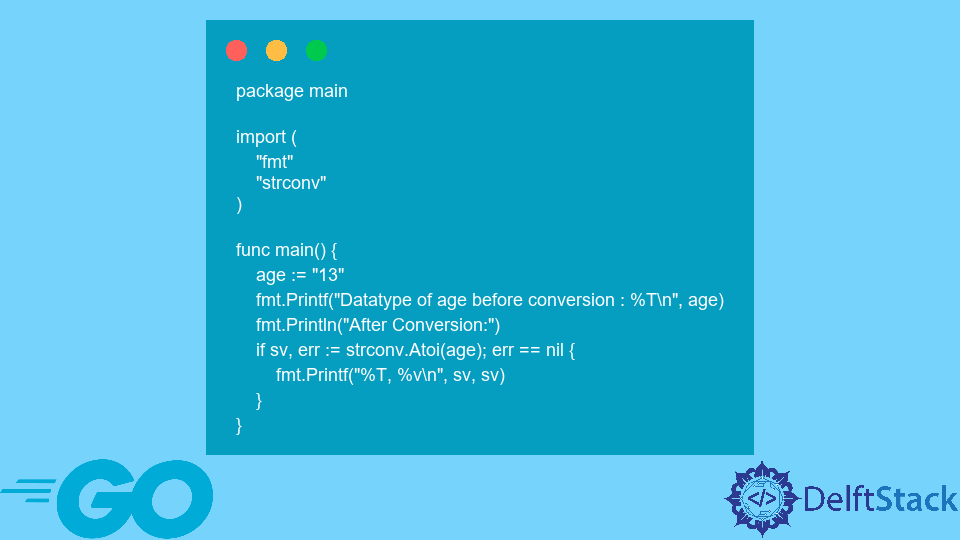
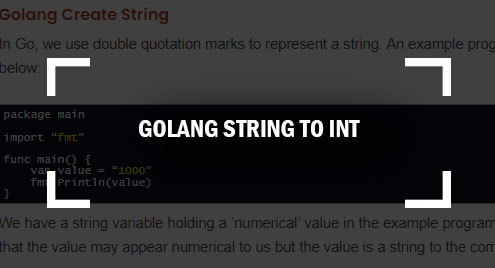



![Go] Chuyển đổi Int/String Slice sang kiểu dữ liệu String trong Golang - Technology Diver Go] Chuyển Đổi Int/String Slice Sang Kiểu Dữ Liệu String Trong Golang - Technology Diver](https://cuongquach.com/wp-content/uploads/2020/06/convert-int-string-slice-to-string.jpg)
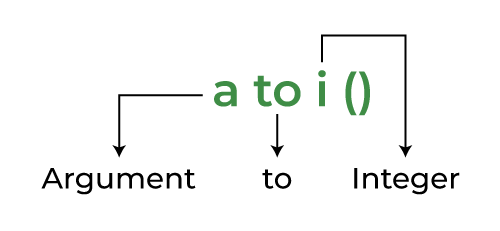
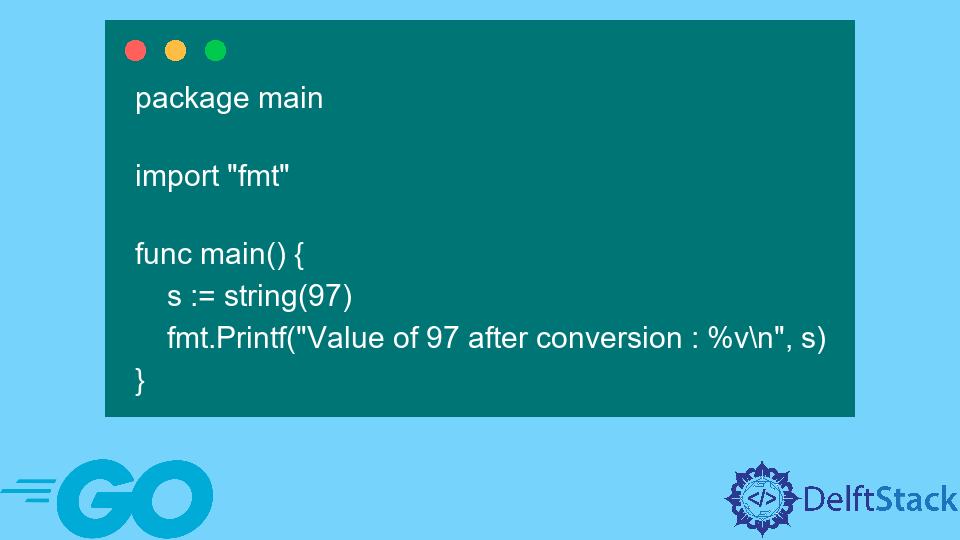
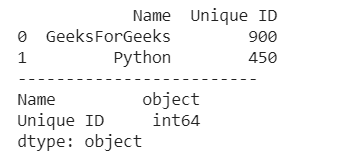
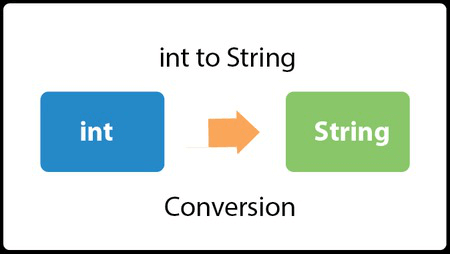

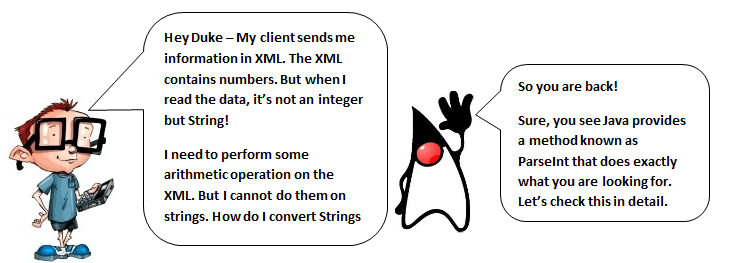

![Golang []byte to int Conversion [SOLVED] | GoLinuxCloud Golang []Byte To Int Conversion [Solved] | Golinuxcloud](https://www.golinuxcloud.com/wp-content/uploads/golang_byte_to_int.jpg)



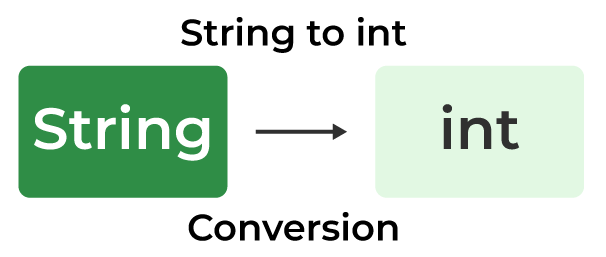
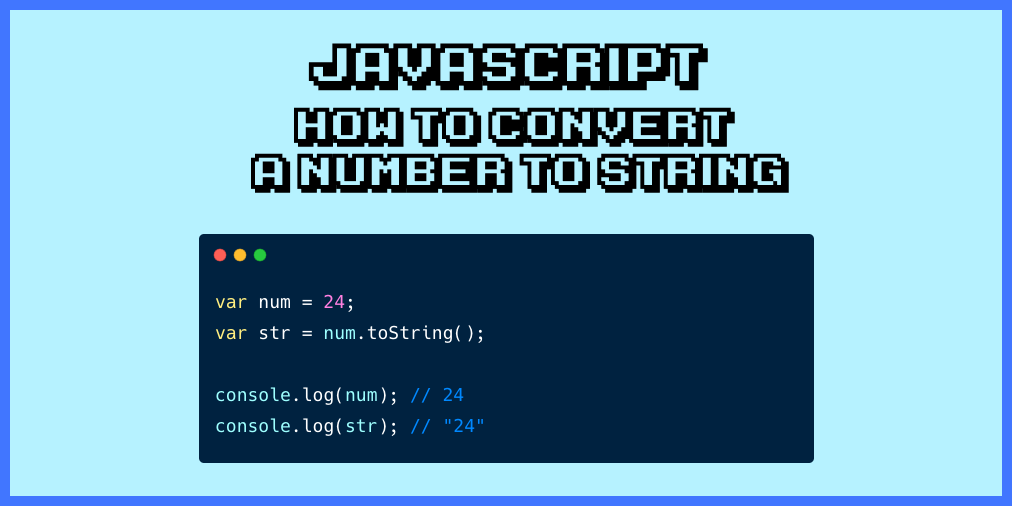
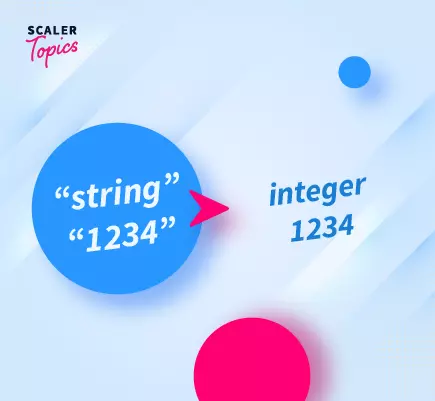

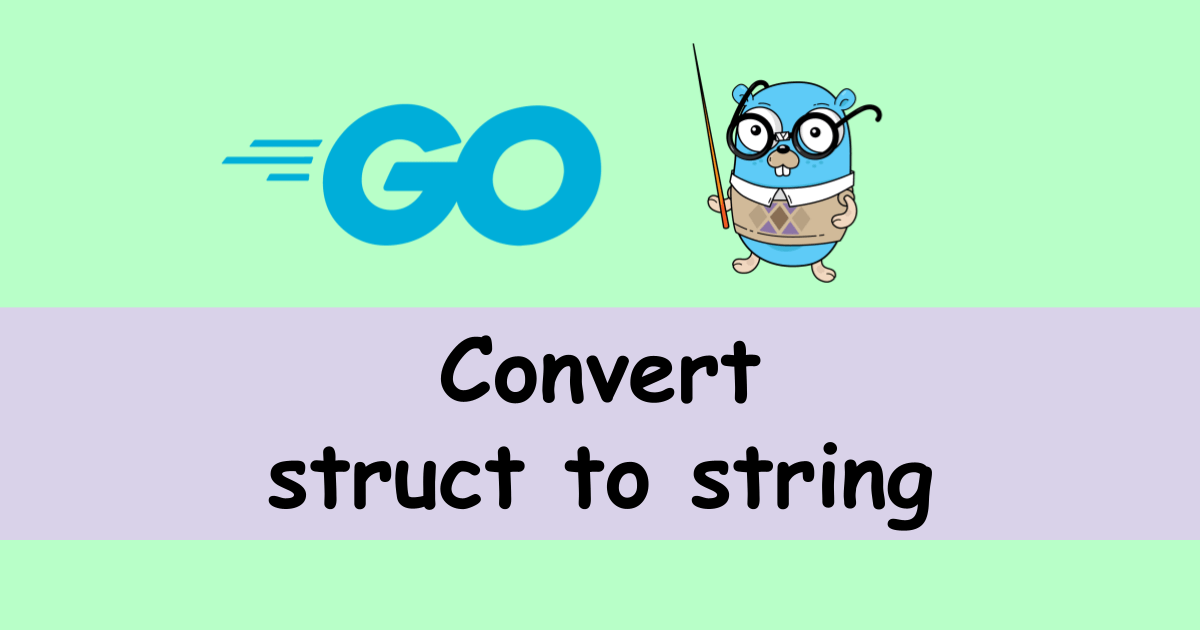

![Go] Chuyển đổi Int/String Slice sang kiểu dữ liệu String trong Golang - Technology Diver Go] Chuyển Đổi Int/String Slice Sang Kiểu Dữ Liệu String Trong Golang - Technology Diver](https://cuongquach.com/wp-content/uploads/2020/06/convert-int-string-slice-to-string-1280x720.jpg)

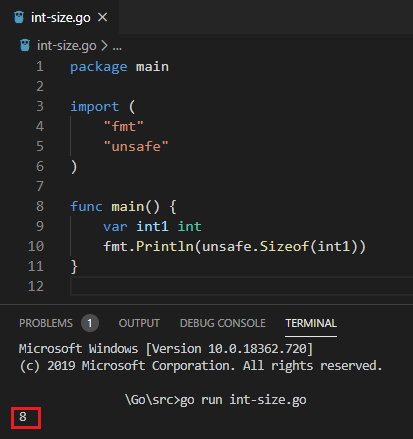
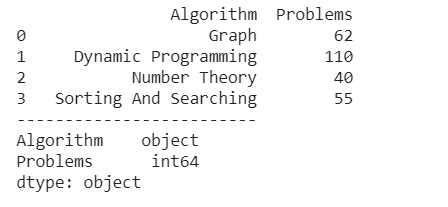









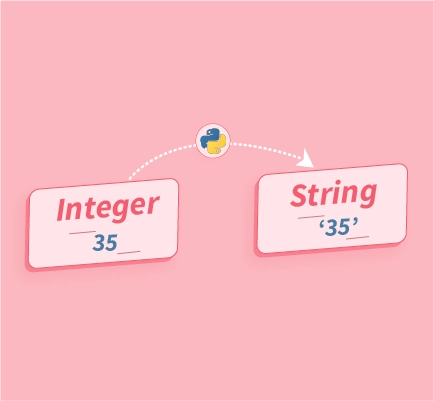

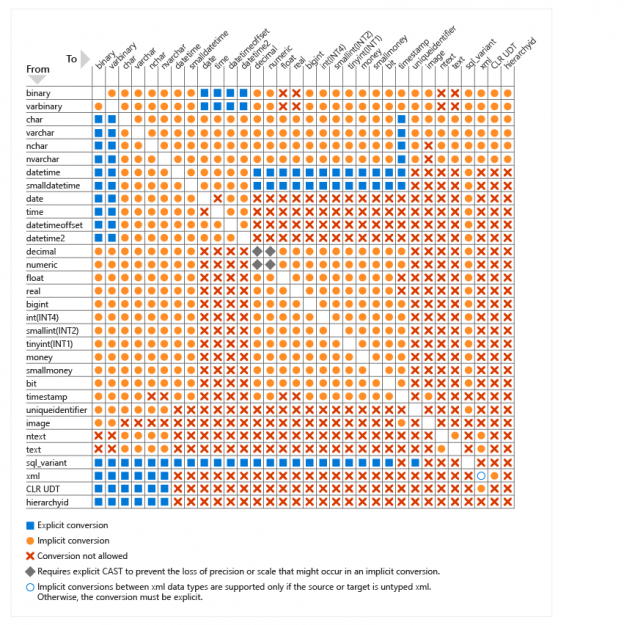




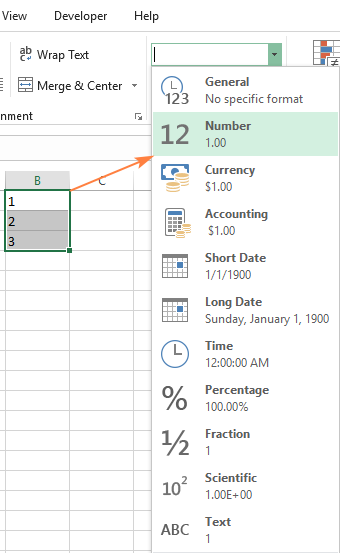
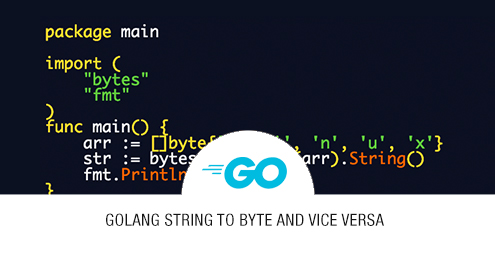
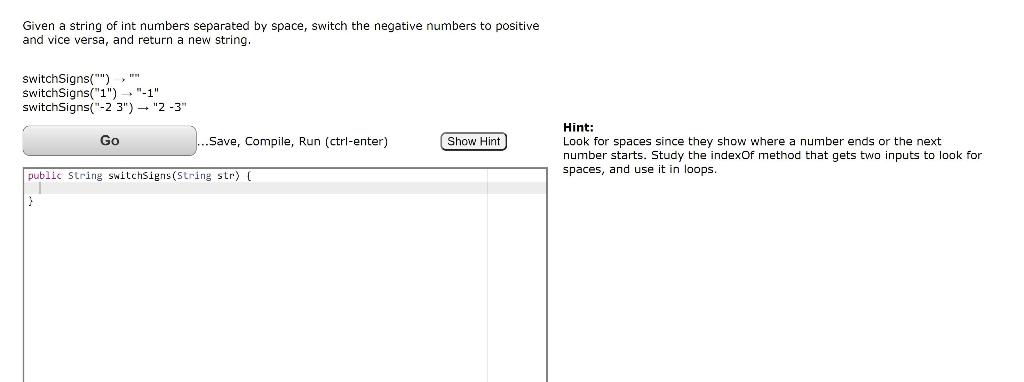
Article link: golang convert string to int.
Learn more about the topic golang convert string to int.
- How to Convert string to integer type in Go? – Eternal Dev
- Convert string to integer type in Go? – Stack Overflow
- How to Convert string to integer type in Go? – Golang Programs
- How to convert a string to int in Golang – Educative.io
- Golang Program to convert string type variables into int
- How to Convert string to integer type in Golang?
- How to Convert String to Integer Type in Golang? – Linux Hint
- How to convert String to Integer in Golang? – Tutorial Kart
- How to Convert String to Int in Golang – AskGolang
See more: nhanvietluanvan.com/luat-hoc